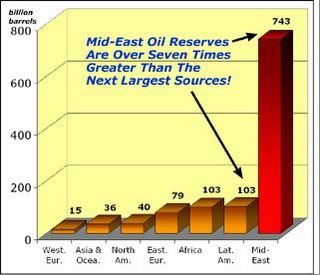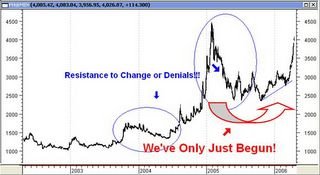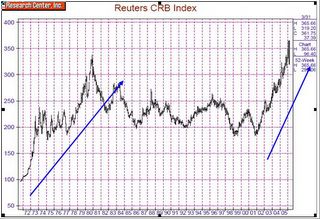``If you’re just in it for the money or you view the market as a way to get-rich-quick, you’ll never have the urge to examine your mistakes. You’ll keep falling into all the common traps... reaching for the moon, not cutting losses, and over trading. Sooner or later you’ll blow up.” Tom Dyson, Daily Wealth
Life’s little miracles. For the longest period, the market seems so intricate to read or comprehend and at the next it seems so simple; everything seems to fall into places as if by design. In another instance of serendipity, in this game of chance, how fortunate of me to have the market play out the route of history. And from history your analyst appears to have captured these observable patterns in a bottle. In my March 20 to March 24th edition, (see From Theme Based to Momentum Investing; It’s Horse Racing Time), these previous patterns were used as basis for my projections, particularly two invariable targets, namely the Phisix benchmark (2,457) and a defined time frame (early May).
Here is what I wrote then (emphasis added)...
``Of course, we understand that history does not necessarily repeat itself but it may rhyme. I have dealt on this last year (see November 7 to 11 Market Timing: Preparing For the Christmas Rally) but the Phisix failed to breach the critical threshold level. With this NEW episode, the pattern may have the chance for it to hold.
Now the table below shows of the 5 past runs.
| Start | End | Months | Troughs | Peaks | Points | in % |
| 29-May-03 | 4-Jul-03 | 1.5 | 1048 | 1308 | 260 | 24.81 |
| 1-Sep-03 | 4-Nov-03 | 2 | 1192 | 1432 | 240 | 20.13 |
| 27-Nov-03 | 23-Jan-04 | 2 | 1313.98 | 1565.56 | 251.58 | 19.15 |
| 26-Aug-04 | 4-Oct-04 | 1.5 | 1547.35 | 1853.29 | 305.94 | 19.77 |
| 16-Dec-04 | 8-Mar-05 | 2.6 | 1804 | 2172 | 368 | 20.40 |
| 24-Feb-06 | ???? | | 2047.62 | | | |
Table 1: Observable Patterns
“During the previous winning streaks, two patterns clearly emerges. One, the Phisix has returned by about 20% on the average and second, the average time frame of a run is about 2 months before it expires or goes to a pause.
“So if we take the February 24th low as a starting point of the present run then 20% returns would be equivalent to 2,457 for the benchmark index. Presently that means an upside of about 11%. By Phisix, we mean the heavyweight component issues such as PLDT, SMC, Globe, BPI, Ayala Land, Ayala Corp, Metrobank, SM Primeholdings, SM Investments, Jollibee Foods and Petron Corp could be expected to have a return of 11% on the average (some above, some below) IF the pattern holds true. Second, if two months will be the reckoning period for the prospective upside steak as in the past, then we could be looking at the end of April to early May for the Phisix to possibly peak out.”
As of May 5th or Friday’s close, the Phisix leapt over and above my target at 2,457 to 2,470! Talk about sheer providence or LUCK!
Well, over the week, the Philippine benchmark posted the best gains among Asian bourses up 8.8% to a seven-year high (you know that...it’s splashed all over media!!!), while recording a 17.85% return on a year to date basis.
Yes, I have read and heard a mouthful as to the supposed causality behind the Phisix recent success, and am delighted to see SOME of my contemporaries seeing the daylight among the clutter of balderdash.
You’d be surprised to learn that compared to the nascent phase of an advancing Phisix in 2003 to 2004 which had been dominated entirely by foreign money, last week’s abbreviated trading week recorded vivacious trading activities by the local investors quite similar to the developments seen in early 2005, which pumped up the market’s turnover even if we exclude the huge cross transaction of Mr. Enrique Razon’s buyout of ANSCOR’s
Put bluntly, this time around, the hefty gains that you see in the Phisix had not been limited to foreign portfolio flows, as local investors have initiated sizeable participation over the buying activities in the broadmarket, lending credence to my theory that local investors have been shifting to reinvest into local currency based assets on the basis of better profit returns opportunities comparable to previously parking their ‘savings’ into US dollar denominated ones. Needless to say, the Peso’s rise had been one of the major subliminal psychological triggers for local investor to the join the ongoing rush to accumulate equity assets listed in the Philippine Stock Exchange.
However, as in the previous runs since the Phisix cyclically reversed in 2003, foreign portfolio inflows have been the leading exponent of equity accumulations, despite the mephitic political mileu and this run makes it no different. Portfolio flows have reached a March 12, 2005 high of over P 3 billion pesos or in just four days where foreign inflows contributed to about 17% of aggregate turnover at P 3.013 billion. As usual, these torrential deluges of foreign capital are symptomatic of global excess capital seeking for profit opportunities or “money chasing too few profits”. Wayne Arnold of the New York Times captures our thoughts in his article, ``Turmoil in Asia Doesn't Dent Investors' Enthusiasm for Its Markets” (emphasis ed.)..
In the























